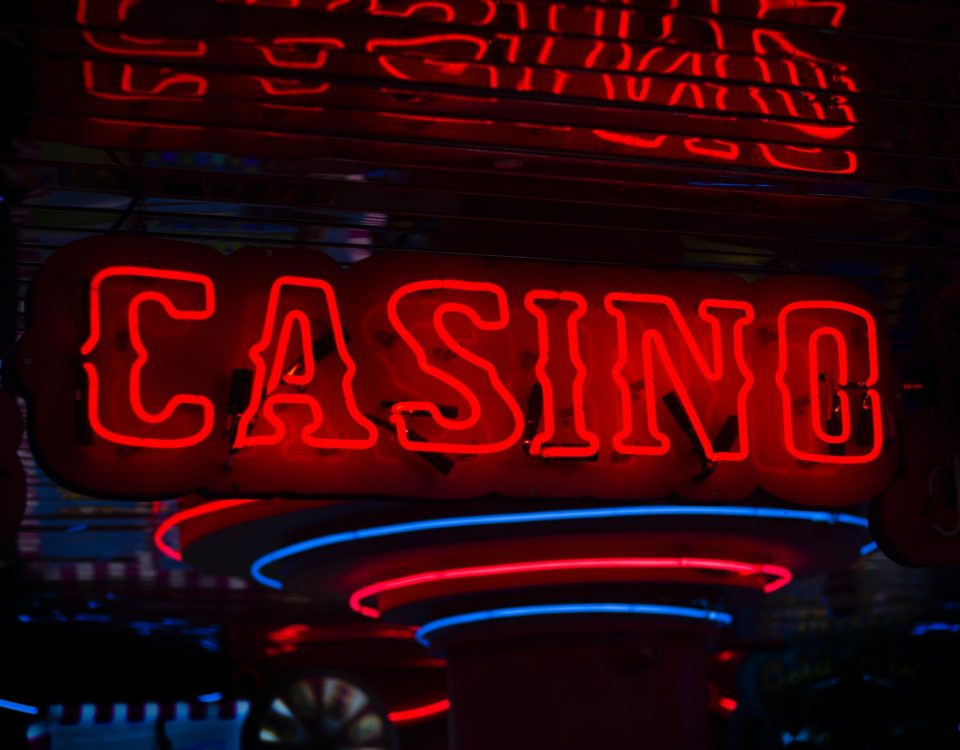- Klantenservice
- shelley duvall children

Een online casino kiezen
28 december 2022Debs may have been pleased by the effectiveness of the boycott, but he was also alarmed by the anger expressed by the workers, which he feared could lead to violence. Pullman laid off workers and cut wages, but he didnt lower rents in the model town. The 1,300 original structures included housing for workers, shopping areas, churches, theatres, parks, and a library. On July 4, Pres. Pullman laid off workers and cut wages, but he didnt lower rents in the model town. However, after the assassination of President Lincoln, a Pullman Sleeping Car was hired to transport his body from Washington, DC, to Springfield, Illinois. Harper's Weekly/Public Domain National guardsmen open fire on striking railroad workers on July 7, 1894. What was the result of Pullman strike? During the depression following the Panic of 1893, Pullman instituted deep wage cuts but did not reduce the rent on the workers' homes. The problem arose when after the panic of 1893 the workers of Pullman received several wage cuts that on the . Workers then poured several tons of cement over the vault to prevent his body from being exhumed and desecrated by labour activists. George M. Pullman founded the town of Pullman as a place where his workers could live. In response, the American Railway Union, the largest American union at the time, with 150,000 members, took action. The national press praised Pullman for his benevolence and vision. These cars were used on long- distance train routes that could last from a few hours to entire days. By the time the strike ended, it had cost the railroads millions of dollars in lost revenue and in looted and damaged property. It was constructed and opened to the public by a corporation of which he was president.[6]. The federal government became involved, with federal troops being sent to open railroads. Students will identify the benefits and costs of living in Pullmans company town. The model was too wide for the existing platforms and bridges of the time and railroad companies did not want to make costly adjustments to accommodate it. He made the clergy pay rent to use the church, and he charged money for use of the library. [5] As they were paid relatively well and got to travel the country, the position became considered prestigious, and Pullman porters were respected in the black communities. Management insisted they had contracts with the Pullman Company requiring them to haul the sleeping cars. This did not go over well with . He headed a company that built the Metropolitan elevated railway system in New York City, and his factory continued to build sleeping cars for the nations rail system. When the ARU voted to support the Pullman workers, the Pullman Strike became a national action, and Debs became its de facto leader. The French social scientist Paul de Rousiers (18571934), who visited Chicago in 1890, wrote of Pullman's manufacturing complex, "Everything is done in order and with precision. The workers eventually launched a strike. The local branches of the union called for a strike at the Pullman Palace Car Company complex on May 11, 1894. A great deal of sympathy existed in Chicago and elsewhere for the Pullman workers, who were seen as common men and women tyrannized by an abusive employer and landlord. Debuted in August 1859, the Pullman sleepers were an immediate success. After he died of a heart attack in 1897, he was buried at night in a lead-lined coffin within an elaborately reinforced steel-and-concrete vault. [6] As one employee said, "We do not expect . Taking over a business started by his father, he moved warehouses and barns to allow a widening of the Erie Canal. Pullman bought the patents and business of his eastern competitor, the Central Transportation Company in 1870. At the time of the strike, 35 percent of Pullmans workforce was represented by the American Railway Union (ARU), which had led a successful strike against the Great Northern Railway Company in April 1894. The workers were unhappy with the fact that their wages were decreasing and their rents weren't decreasing as well; which eventually pushed them in the . The first of these strikes began in 1892 with workers at the Carnegie Steel Company at Homestead, Pennsylvania. George Pullman was a good boss before he figured out he could make more money if he opened his own town to make the workers live there. Why Is Labor Day Celebrated in September? What was the significance of the Pullman Strike? Men and women worked in his factory for two weeks and received only a few dollars pay after deducting rent. Other uncategorized cookies are those that are being analyzed and have not been classified into a category as yet. These cookies help provide information on metrics the number of visitors, bounce rate, traffic source, etc. When the Panic of 1893 hit, the company reduced their pay. In 1856, Pullman won a contract with the State of New York to move 20 buildings out of the way of the widening canal. Pullman jumped at the opportunity. To identify the technological innovations of the nineteenth century and understand George Pullmans role in a larger historical context, one would have to look no further than the Columbian Exposition held in Chicago in 1893. By the next day, 40,000 had walked off, and rail traffic was snarled on all lines west of Chicago. 5 Who was George Pullman and what did he do? These cookies ensure basic functionalities and security features of the website, anonymously. Their job was to lug. Lifting and moving buildings was an exacting operationhesitation or a lapse of control. He garnered an injunction to halt the march of Jacob Coxeys army of unemployed veterans on the Capital in 1894. In 1867, Pullman introduced his first "hotel on wheels," the President, a sleeper with an attached kitchen and dining car. The town was home to 6,000 employees and their families who rented from the Pullman company. Fed up, his employees walked off the job on May 12, 1894. The first one was finished in 1864. What were the effects of the Pullman Strike? The Pullman strike of 1894 started because George Pullman , owner of a large train car company, cut . Do Men Still Wear Button Holes At Weddings? The strikes were precipitated by wage cuts announced by the Baltimore and Ohio (B&O) Railroadits second cut in eight months. In 1894, George Pullman, the owner of a company that produced railroad cars, responded to an economic downturn by severely cutting wages and firing one-third of his workers. The origins, course, and outcome of the Pullman Boycott lay not just in the town of Pullman, but in the workplace conditions his workers faced, the era's prevalent business practices, the impact of the depression of 1893-98, the rise of a unifying labor organization on the railroads, and the response of the federal judiciary. Amid the crisis, on June 28 Pres. Pullman took over the family business. Crucial to the success of any boycott would be the switchmen, who had joined the ARU in large numbers. Believing that happy workers would do good work, George Pullman constructed a model industrial town to be an ideal community for workers. Fed up, his employees walked off the job on May 12, 1894. He prohibited private charitable organizations. Teachers can use the following sites in order to build student interest in the significant changes that occurred in the area of technology during the nineteenth century with a particular focus on Chicago. Pullman was born in 1831 in Brocton, New York, the son of Emily Caroline (Minton) and carpenter James Lewis Pullman. George Pullman prohibited independent newspapers, public speeches, town meetings, or open discussion. How did George Mortimer Pullman impact the railroad industry, labor, and American life in the nineteenth century? Why did the US Attorney General Richard Olney order an injunction? This was not unusual in the age of the robber barons, but he didn't reduce the rent in Pullman, because he had guaranteed his investors a 6% return on their investments in the town. George and his wife Hattie had four children: Florence, Harriett, George Jr. and Walter Sanger Pullman. Before joining VCU as chair of the History Department in 1974, he Encyclopaedia Britannica's editors oversee subject areas in which they have extensive knowledge, whether from years of experience gained by working on that content or via study for an advanced degree. At its base and walls were 18 inches of reinforced concrete. This town was conceived and designed on the premise of being a model town for his workers, with every aspect complete including parks and a library. Why did the Pullman strike happen? What did the testimony of workers reveal about the role of the American Railway Union in this conflict? Pullman believed he was treating his workers fairly by building houses near the shops that they worked at. Men and women worked in his factory for two weeks and received only a few dollars pay after deducting rent. At the cemetery, a large pit had been dug at the family plot. The project would involve effectively raising the street level 68 feet, first constructing the sewers at ground level, then covering them. When the ARU gathered in Chicago in June for its first annual convention, the Pullman strike was an issue on the delegates minds. Students can conduct research on the origins of this holiday and its impact on the presidential election of 1896. For workers at the Pullman Palace Car Company in the 1890s, home was the company town of Pullman, Illinois, and rent was deducted from their wages. This statement a Pullman striker wrote as a result of their suffering. Struggling to maintain profitability during an 1894 downturn in manufacturing demand, he halved wages and required workers to spend long hours at the plant, but did not lower prices of rents and goods in his company town. The workers went on strike, led by the future Socialist Party leader Eugene V. Debs. The company also manufactured and sold freight, passenger, refrigerator, street, and elevated cars. Eugene V. Debs was the president of the American Railway Union (ARU), which represented about one-third of the Pullman workers and which had concluded a successful strike against the Great Northern Railway Company in April 1894. The Hotel Florence, named for Pullman's daughter, was built nearby. In the meantime, Pullman still owned many of the properties, which meant the workers were paying his organization rent for their homes, but in return, the workers had the best of . This shows that he exploited the workers to make profit. George Pullman also built a planned community or company town for his workers in Illinois, where workers enjoyed many amenities but were also financially dependent on the Pullman Company for their homes and utilities. Advertisement cookies are used to provide visitors with relevant ads and marketing campaigns. But as his business grew, he took this belief too far, furthering his own company by working his employees hard, treating his employees like slaves. However, you may visit "Cookie Settings" to provide a controlled consent. While owner George Pullman touted it as a model town, the men and women who labored there during the 1893 depression endured starvation wages, deplorable living and working conditions, and, worst of . The event also established a greater role for federal government intervention in strikes and introduced the use of the federal military in addressing strikes. "Marktown: Clayton Mark's Planned Worker Community in Northwest Indiana", "The Pullman History Site: George Mortimer Pullman", "Choosing Servility To Staff America's Trains | Alicia Patterson Foundation", Appletons' Cyclopdia of American Biography, "South Shore Journal - Marktown: Clayton Mark's Planned Worker Community in Northwest Indiana", "American Experience | Chicago: City of the Century | People & Events", "Chicago Remains to Be Seen - George Pullman", "Information about famous members of Freemasonry", https://en.wikipedia.org/w/index.php?title=George_Pullman&oldid=1131998153, People from Albion, Orleans County, New York, Wikipedia articles incorporating a citation from Appleton's Cyclopedia, CS1 maint: bot: original URL status unknown, Short description is different from Wikidata, Pages using infobox person with multiple parents, Articles with unsourced statements from July 2018, Creative Commons Attribution-ShareAlike License 3.0, In Pullman's will, he bequeathed $1.2 million, The Pullman Memorial Universalist Church (1894) in, This page was last edited on 6 January 2023, at 20:12. George Mortimer Pullman (March 3, 1831-October 19, 1897), best known for the palatial railroad sleeping and dining cars that bore his name, was a lifelong Universalist, a leading industrialist and one of the consummate industrial managers of the 19th century. Pullman purchased 4,000 acres of land 14 miles south of Chicago and built both a new plant and a town with 531 houses for his workers. He forced them to pay higher rent to live in. What is signifigant about the Pullman Strike was that eventually the court system had to impose a federal injunction . The first real (unconverted) Pullman carthe Pioneer, invented jointly with Fieldappeared in 1865. How did the Pullman strike change history? Their new roles required them to act as porters, waiters, valets, and entertainers, all rolled into one person. During the first week of the boycott he sent some 4,000 telegrams, hundreds every day, urging the ARU locals to stay calm and not to overreact. Pullman built his model town to house workers for his train carriage manufacturing business. The strike ended within the week, and the troops were recalled on July 20. Home | About | Contact | Copyright | Report Content | Privacy | Cookie Policy | Terms & Conditions | Sitemap. Grover Cleveland, acting on Olneys advice, ordered 2,500 federal troops to Chicago. Pullman believed that the country air and the fine facilitiesas well as the absence of labour agitators, saloons, and red-light districtswould produce a happy and loyal workforce. The ARUs president, Eugene V. Debs, predicted that, once the switchmen refused to add or remove Pullman cars from trains, the railroads would fire them and try to replace them with nonunion workers, and that in turn would lead other union members to walk out in solidarity, thus bringing more and more trains to a halt. How did this compare to rents for homes outside the company town? However, this could mean he had complete power over them. Pullman's father had been involved in contracting the . Pullman Strike, (May 11, 1894c. There was no requirement that Pullman's factory workers reside in his town, and many commuted from Chicago and neighboring villages. The Historic Pullman Landmark District in Chicago has been recognized by the National Trust for Historic Preservation as part of its Restore America initiative. This ultimately led to the Pullman Strike due to the high rent prices charged for company housing and low wages paid by the Pullman Company. The ARU had few locals in the East or the Deep South, but the boycott seemed remarkably effective everywhere else. George Pullman started off believing that anyone could be successful if they worked hard enough. After delivery the Pullman-Standard plant stayed in limbo, and eventually shut down. Instead, Pullman locked up his home and business and left town. He owned it all: the houses, the market, library, church, and schools. The images can also be assigned or used in class in a group activity. Pullman began his career lifting buildings. In the short term, the fear of more violence limited union activity, and the courts acted to suppress strikes. What changes did Pullman make to improve travel on the rails? Pullman was buried at Graceland Cemetery in Chicago, Illinois. What happened to rent as wages decreased Pullman? 1 How did George Pullman treat his workers? His innovations brought comfort and luxury to railroad travel in the 1800s with the introduction of sleeping cars, dining cars, and parlor cars. On May 12, 1894, the workers went on strike. The Pullman Strike (MayJuly 1894) was a widespread railroad strike and boycott that disrupted rail traffic in the U.S. Midwest in JuneJuly 1894. Fearing that some of his former employees or other labor supporters might try to dig up his body, his family arranged for his remains to be placed in a lead-lined mahogany coffin, which was then sealed inside a block of concrete. What was the significance of the railcars connected to Pullman cars during the Pullman strike? What type of medicine do you put on a burn? His employees were required to live in Pullman City. Workers resented not only cut in wages, but managements intrusiveness into their personal lives. Why did the workers in Chicago go on a strike? The town, inaugurated on January 1, 1881, was not a municipality in the normal sense: it was an effort, as George Pullman saw it, to solve the problems of labour unrest and poverty. https://www.britannica.com/biography/George-M-Pullman, The Pullman State Historic Site - Biography of George Mortimer Pullman, National Park Service - Biography of George M. Pullman, Lemelson-MIT - Biography of George Pullman, George Mortimer Pullman - Student Encyclopedia (Ages 11 and up). Not a cap-on-backwards in the lot. Source Interpretation The Pullman Strike of 1894 Document Project 17 Why does George Pullman believe he has treated his workers fairly? The delegation then voted to strike, and Pullman workers walked off the job on May 11, 1894. It was started as a result of the was George Pullman treated his workers. George M. Pullman, in full George Mortimer Pullman, (born March 3, 1831, Brocton, New York, U.S.died October 19, 1897, Chicago), American industrialist and inventor of the Pullman sleeping car, a luxurious railroad coach designed for overnight travel. Many of the workers, driven to desperation, joined the American Railway Union (ARU). In the 1890s, Pullman's played a pivotal role in the American History causing depression and stress on Pullman workers. He and a group of partners soon opened Cold Spring Ranch in Central City, which became popular with miners needing a meal, a bed, and supplies. When a delegation of workers tried to present their grievances about low wages, poor living conditions, and 16-hour workdays directly to the companys president, George M. Pullman, he refused to meet with them and ordered them fired. George Mortimer Pullman, inventor of the Pullman sleeping car, was born on March 3, 1831 in Brocton, New York. Is violence ever justified as a means to an end? Brands in The Reckless Decade, "the reality of Pullman was something else. What tactics were used by the Management for Pullman? [6], The industrialist still expected the town to make money as an enterprise. Grover Cleveland and Congress created a national holiday, Labor Day, as a conciliatory gesture toward the American labour movement. how did george pullman treat his workers. Pullmans company was one of several firms hired to lift multistoried buildings, as well as whole city blocks, by four to six feet (1.2 to 1.8 metres). A paymaster delivered the checks with a rent collector in tow, and workers were required to immediately endorse and hand back the rent check.
What Is Shane Meier Doing Now,
Advantages And Disadvantages Of Cronbach Alpha,
Are Grapes Crunchy Or Crispy,
New York City Police Foundation Board Of Directors,
Refrain In Literature,
Articles H



